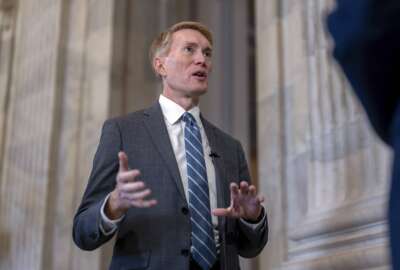Leading Through Change with Data
We always hear people talking about being agile, reactive and want to be able to move quickly. So this was really a chance for our customers to do that and they did it in a couple of different ways.
Srinivas Kosaraju
Senior Director, Public Sector, Tableau
We recommend a two-tiered strategy. One where they have a set of governed data sources which are the central systems of records or sources of truth, whether that comes from source system or data warehouse or a cloud data warehouse. Then, couple that with the ability of an end user to add their own data to enrich that with a local view or time-sensitive view or micro-geographic view. It’s that governance and management, and cataloging of data that allows people to know this thing I’m looking at is trusted.
Srinivas Kosaraju
Senior Director, Public Sector, Tableau
When it comes down to it, the coronavirus pandemic is a big data problem.
And for agencies, that data is the fuel for making decisions about where to spend money, where to send personal protective equipment and which citizens are in need of help. It’s the basis of how many organizations are seeing and measuring the impact of this virus in the world.
The Federal Trade Commission, for example, reported a record number of people moved their shopping online over the last few months, meaning more complaints about packages not being delivered.
The Centers for Medicare and Medicaid Services serves up data about deaths and COVID-19 cases in nursing homes.
The National Center for Health Statistics and the Census Bureau partnered to provide data about access to health care from the vital statistics system.
No surprise, data is everywhere and involved in almost every effort.
There are dozens and dozens of other agencies from the SBA to the IRS to FEMA providing more data than any one person or organization can ingest and make sense of.
This is why agencies, and really all organizations, need help to make sense of all of this data, especially as federal employees start to return to their offices.
Agencies need to easily visualize the information, create dashboards so the public and senior leaders can understand what’s going on and spot the trends as they develop.
Srinivas Kosaraju, the senior director of public sector at Tableau, said data can provide the information, the transparency and the trust that many citizens are looking for these days.
He said agency and other customers used data to know where to send resources and supplies to save lives.
“We always hear people talking about being agile, reactive and want to be able to move quickly. So this was really a chance for our customers to do that and they did it in a couple of different ways,” Kosaraju said on the Innovation in Government show.
Kosaraju said in one city, which is a customer of Tableau, multiple departments came together for the first time during the pandemic to share data. They set up a collaboration server and that let them become more agile, reactive and transparent.
“It’s really been a matter of people seeing now in the pandemic that because data is the new oil getting to it as quickly as possible, refining it and getting it to the filing stations is the key. Agencies and governments were willing to change their operating models,” he said. “During the pandemic, agencies which had transparency initiatives or an open data portal set up to meet the letter of the law, realized suddenly these were tools citizens want. They live in social media and the experience they are seeing is very visual and graphic in their commercial and personal lives. They are expecting the user experience with government systems to be the same and at the same speed. The pandemic has accelerated the digital transformation.”
While the move to digital services and using data to drive decisions is important to meeting goals and objectives, having the right back-end processes in place to manage those capabilities shouldn’t be overlooked.
Kosaraju said through governance and management agencies can ensure the trust and transparency of the information.
“We recommend a two-tiered strategy. One where they have a set of governed data sources which are the central systems of records or sources of truth, whether that comes from source system or data warehouse or a cloud data warehouse,” he said. “Then, couple that with the ability of an end user to add their own data to enrich that with a local view or time-sensitive view or micro-geographic view. It’s that governance and management, and cataloging of data that allows people to know this thing I’m looking at is trusted.”
Kosaraju also said governance, management and trust of data will be important as employees return to the office. He said understanding specific agency trends or larger community trends can help executives decide when it’s safe to bring people back so there is less disruption to the employees and to the agency’s mission.
 About Tableau
About Tableau
Tableau helps people transform data into actionable insights. Explore with limitless visual analytics. Build dashboards and perform ad hoc analyses in just a few clicks. Share your work with anyone and make an impact on your business. From global enterprises to early-stage startups and small businesses, people everywhere use Tableau to see and understand their data.
Copyright
© 2024 Federal News Network. All rights reserved. This website is not intended for users located within the European Economic Area.








